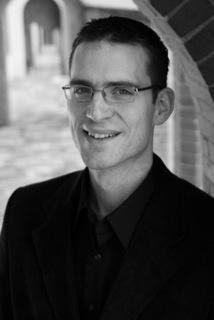| Divinity and Forestry: Graduate Religious Education for Environmental Problems |
![PDF-NOTE: Internet Explorer Users, right click the PDF Icon and choose [save target as] if you are experiencing problems with clicking.](http://rsnonline.org/templates/rsntemplate-smallmasthead/images/pdf_button.png) |
 |
|
Page 1 of 3 Willis Jenkins, Yale University
Reading Theologies as Reform StrategiesI teach in a divinity school that offers a joint degree with a school of forestry and environmental studies. A collaboration that might have seemed awkward or curious in a previous era seems fitting in ours, appropriate to our most difficult cultural challenges. Professional competency for the graduates of both schools increasingly requires aptitudes for engaging complex ecological problems that exceed normal disciplinary competencies and outstrip received moral inheritances. The syllabus for my “Environmental Theologies” course (cross-listed in both schools) helps students interpret what happens in the gap between inherited traditions and the challenges of unprecedented problems. I set a pluralist course of readings covering several distinct strategies of response emerging from Christian traditions, and then rely on a religiously and professionally diverse classroom in which some students will question whether those strategies are faithful developments of those traditions and others will ask whether they are adequate responses to the problems at hand. My pedagogical assumption is that the tension between received traditions and emerging problems can help shape professional aptitudes needed by students in both schools. For my theological students, I want unprecedented problems like climate change to stimulate inventive forms of participation in their traditions. Inventiveness requires an aptitude for reform that does something more than merely criticize religious inheritances for their inadequacy. Criticizing some idea of Christianity (or any other tradition) with some idea of ecology (or any other science) seems unlikely to help moral communities address specific problems. So I ask theology students to first interpret how faith communities make environmental problems significant for their way of living the faith. How, for instance, do they make toxic exposure a theological problem? How do they make toxins perilous to their account of the experience of God? Then I ask students how a community’s strategy could be critiqued and cultivated so that it generates more adequate responses to that problem, or so that it can address another kind of problem (e.g., climate change). My environmental management students face a different sort of challenge. I want them to move beyond seeing religion as a very strong kind of authority, a treasury of useful moral symbols, or the key to reaching odd political constituents. (Those are three instrumental reasons commonly given for wanting to take the course.) I want them to learn a more robust religious pragmatism by appreciating how religious communities mobilize logics of change, how they discover new capacities from their patterns of life, and how they invent new possibilities from cultural inheritances. I ask environmental students to see in the ways that religious communities confront new problems a microcosm of how cultures learn and change, and to find in that change a role for their own professional skills. Scientists can learn to present problems to various Christian communities in ways that productively disturb their central commitments, leading to more useful responses to a given problem. Working together, students interpret a dozen trajectories of responses to ecological problems from a dozen different theological traditions. With the mix of students in the class, I can rely on someone in the room being familiar with each of the various traditions and environmental problems. I organize the variety according to theological tradition because I want students to first appreciate why Christian environmental projects differ so much from one another. Anabaptist environmental theologies do different things than Catholic sacramental theologies because they work with a different background narrative of nature and grace, incarnation and agency. Different environmental reform projects also work with varying senses of what it means to belong to a tradition. Eastern Orthodox theologies and North American creation spiritualities both revisit the doctrine of Sophia, but do so differently in part because they have divergent sensibilities about how tradition works. The interpretive task of reading across a range of theologies that do different things with similar beliefs and symbols can be frustrating for students who want to work out one normative relation of “Christianity and ecology.” By the latter third of the semester, however, students begin to recognize a meaningful pluralism, seeing how communities shape distinctive patterns of response according to distinctive theological commitments. Students begin to sense how ministerial and ecological professionals might interact with communities according to their still-developing reform strategies. The semester culminates with students presenting work that focuses on a particular theological community addressing a particular environmental problem. |


 Willis Jenkins is the Margaret Farley Assistant Professor of Social Ethics at Yale Divinity School and holds a secondary appointment to the Yale School of Forestry and Environmental Studies. He teaches courses on environmental ethics, ecotheologies, global ethics, and Christian social thought. He is the author of Ecologies of Grace: Environmental Ethics and Christian Theology (New York: Oxford University Press, 2008).
Willis Jenkins is the Margaret Farley Assistant Professor of Social Ethics at Yale Divinity School and holds a secondary appointment to the Yale School of Forestry and Environmental Studies. He teaches courses on environmental ethics, ecotheologies, global ethics, and Christian social thought. He is the author of Ecologies of Grace: Environmental Ethics and Christian Theology (New York: Oxford University Press, 2008).